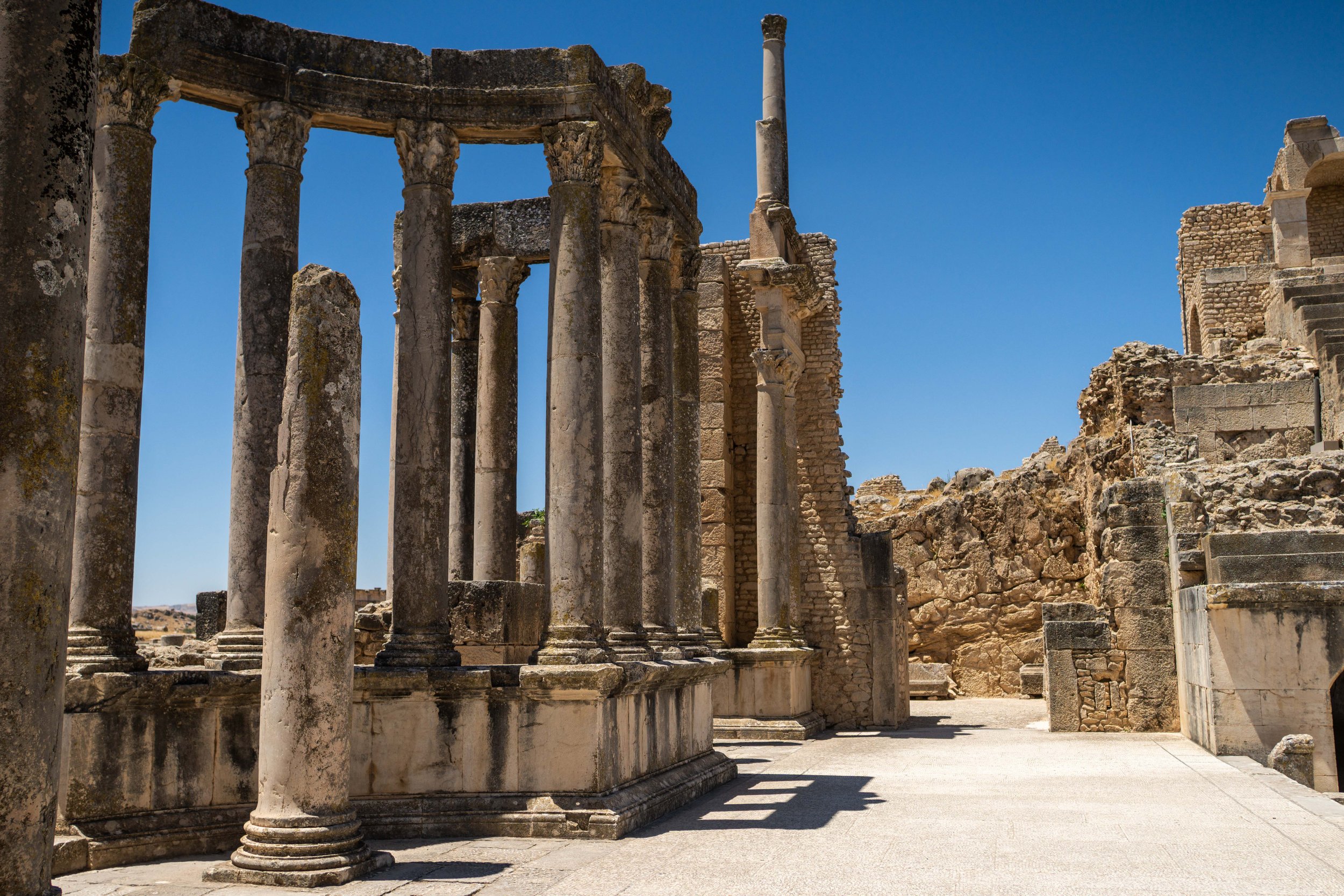Just going to separate the various locations I visited while in Tunisia along with the associated photos and comments.
Dougga was my first location visited and I rented a car to get there as I did not have an accompanying guide. Renting a car in Tunisia was easy. Just headed to the airport, grabbed the VW Polo or something or other and off I went. Time from Tunis to Dougga was a couple hours of steady driving. Highways and side roads were all well maintained. I encountered one checkpoint at which as soon as I said I was an American and going to Dougga, I was waived on.
The site itself lies in the countryside with no real major towns immediately near it and is surrounded by olive trees and other agriculture. Much of the site still lies buried under the farmland and owned by private parties and has not been excavated. What has been uncovered is phenomenal. A city of thousands in both Berber and Roman rule it contains architecture from many influences. Homes, theaters, temples, marketplaces, wind dials, baths, brothels, theaters, aqueducts, sewers, cisterns…all remain in identifiable forms after 2000 years. Inscriptions are legible, statues intact (except for the heads of course as each time there was a new Caesar, the head would need to be replaced). The most impressive mosaics and statues have been carried away to the national Bardo museum in Tunis but the larger elements remain for view and exploration. Allowing at least 2 hours for a visit is advised as it is a large complex—the entire town is essentially walkable and can be “touched” by a visitor today.
The city itself on a high hill and surrounded by armed and visible outposts was less subject to violence than Carthage or other locations which helped preserve it then and its more remote location protects it from trampling today. I was accompanied on my visit by only a handful of others in my several hours. The site also suffers from less of the garbage and carelessness of the local visitors as other sites would reflect in my other stops.














